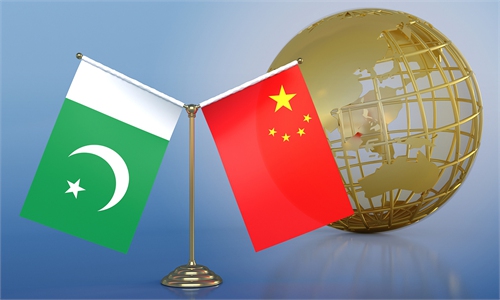
Photo: Pang Yue/GT
China is set to launch the Shenzhou-20 crewed spacecraft at 5:17 pm on Thursday (Beijing Time) - the Space Day of China - from the Jiuquan Satellite Launch Center in Northwest China, Lin Xiqiang, a spokesperson of the China Manned Space Agency (CMSA), announced on Wednesday.
Currently, the preparations are in order, the spokesperson said at a press briefing. The Long March-2F Y20 carrier rocket is scheduled to be fueled in due course.
Three taikonauts Chen Dong, Chen Zhongrui and Wang Jie will carry out the mission. Chen Dong, who carried out the Shenzhou-11 and Shenzhou-14 missions, will be the commander, according to CMSA.
Chen Zhongrui and Wang are from China's third batch of taikonauts and will be undertaking their first spaceflight mission. Chen Zhongrui was an air force pilot, while Wang was an engineer from China Academy of Space Technology.

Astronauts for the upcoming Shenzhou-20 spaceflight mission Chen Dong (C), Chen Zhongrui (R) and Wang Jie meet the press in Jiuquan Satellite Launch Center in northwest China on April 23, 2025. (Photo: Xinhua)
At a press conference with Chinese and international media following the Shenzhou-20 mission announcement, Chen Dong expressed great excitement in undertaking his third spaceflight. He said that he felt immense pride and honor — being able to once again venture into space on behalf of the motherland is a tremendous privilege and a source of happiness.
Once an air force pilot, Chen Zhongrui said that he feels deeply proud of the rapid development of China's aerospace industry. "Sometimes, I dreamed of flying higher and higher, breaking through the atmosphere to experience the vastness of space," he said.
As the spaceflight engineer of the Shenzhou-20 mission, Wang is primarily responsible for platform management, equipment maintenance and repair, emergency troubleshooting, as well as conducting space science experiments related to new microgravity protection technologies and human-machine collaboration.
At the press conference, Wang emphasized that although the crew members have defined roles, there is no separation in their teamwork. Every operation and every experiment is backed up by one another and completed through collaboration.
The launch of Shenzhou-20 is the 35th flight mission of China's manned space program, and the fifth crewed mission during the application and development stage of China's space station. The crew is scheduled to return to the Dongfeng landing site in northern China in late October.
The mission's primary objectives include completing an in-orbit rotation with the Shenzhou-19 crew, staying at the space station for approximately six months, carrying out experiments in space science and applications, as well as performing extravehicular activities and cargo in and out tests.
The Shenzhou-19 crew plans to return to the Dongfeng landing site on April 29 after completing their handover to the Shenzhou-20 team, Lin said.
Speaking about biological experiments aboard the mission, Lin said that previous experiments with zebrafish and fruit flies had been very successful. This mission will carry out three more experiments using zebra fish, planarian, streptomycetes as research objects. Among them, the regeneration experiment involving planarians will be the first of its kind in China's space program.
Thursday is also China's Space Day, which marks the launch of its first satellite, "Dongfanghong-1," into space on April 24, 1970. Lin stressed that the selection of launch window is mainly based on mission requirements, and the launch window coincides with the 10th China's Space Day, which adds a special significance to this mission.
Currently, the crewed spacecraft adopts a 6.5-hour fast, automated rendezvous and docking approach. The space station has implemented phase adjustments to match before the launch.
Lin said that the training of the fourth batch of taikonauts is progressing smoothly in line with the established plan. Hong Kong and Macao taikonauts, serving as load experts, are expected to carry out their first mission as early as 2026.
Moreover, the selection of Pakistani astronauts is now under way, which, like the selection of Chinese taikonauts, is divided into three phases, preliminary selection, re-selection and final selection. Among them, a preliminary selection will be carried out in Pakistan, while re-selection and finalization will be carried out in China, and two Pakistani astronauts will eventually be selected to participate in training in China, according to CMSA.
One Pakistani astronaut will participate in a joint flight as a payload specialist, and during the period in orbit, in addition to completing the daily work of the crew, the astronaut will also be responsible for the operation of scientific experiments on the Pakistani side, said Lin.
"At the same time, we are in the process of consulting with the countries concerned on the participation of their astronauts in the flights of the China's space station, and will release information on the relevant progress in due course."
Zhan Kang also contributed to the story



